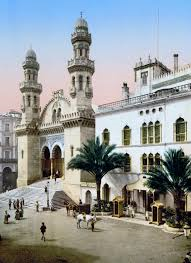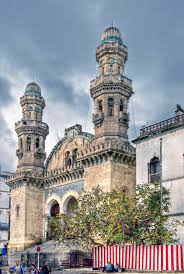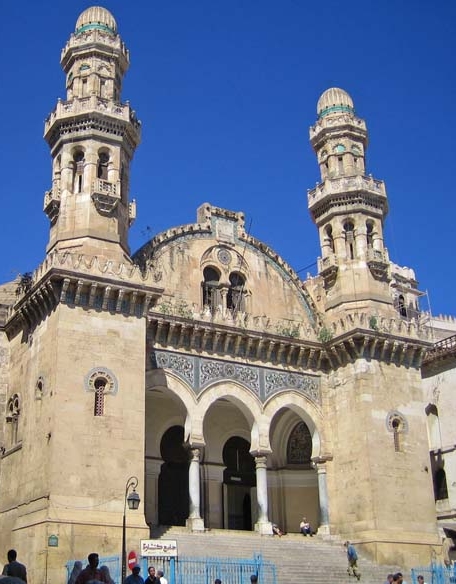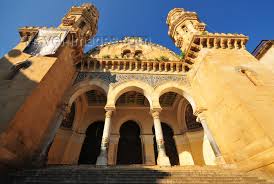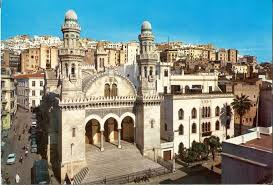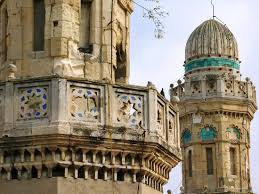The Ketchaoua Mosque is a mosque in Algiers, the capital of Algeria. It is located at the foot of the Casbah, which was built during the Ottoman rule in the 17th century, which is a UNESCO World Heritage Site. The mosque that stands on the first of the Casbah’s many steep stairways, was logistically and symbolically the cynosure of the pre-colonial city of Algiers. The mosque is noted for its unique fusion of Moorish and Byzantine architecture.
The mosque was originally built in 1612. Later, in 1845, it was converted during French rule, to the Cathedral of St Philippe, which remained so until 1962. It was reconverted into a mosque in 1962. In spite of these transitions over two different religious faiths in the last about four centuries, the mosque has retained its original grandeur and is one of the major attractions of Algiers.
The history of the Ketchaoua Mosque is integral to the ancient history of the Casbah, which is recognized under UNESCO World Heritage List for its cultural heritage. The mosque was built under the Ottoman Rule (16th and 17th centuries) at the centre of the Casbah. Its exact location was at the centre of the city at the intersection of the roads from the lower Casbah leading to the five gates of the Algiers city. An unconfirmed mention is made of the mosque in the 14th century, but the confirmed "notarial document" dates it to 1612. However, it was rebuilt by Hasan Pasha according to a commemorative inscription in the later part of the 18th century when it was glorified as a structure of "Unparalleled beauty.” In 1838, the mosque was converted into a cathedral named as "the St. Philippe Cathedral" by the French. In 1840, following the conquest of the Algerian city of Constantine by France, Marshal Sylvain Charles Valée got a cross fixed on top of the cathedral. After the liberation of Algeria from French rule, the cathedral's restitution as the Ketchaoua Mosque in 1962 is considered as "having significant religious and cultural importance," and it richly testifies the history of "this mosque-turned-cathedral-turned-mosque".[8] The rededication of the cathedral into a mosque was performed in the first year of Algerian independence itself, in a formal ceremony presided by Tawfiq al Madani, the Minister of Harbours, held at the Ben Badis Square (earlier known as Lavigere). This event has also been described as "correlatively for the reconquest of Algeria’s authenticity as a supreme symbol of the nation’s recovery of its integrity."




